Corn
A Three Sisters bowl.
When you think of corn, what comes to mind? Probably corn on the cob. But what’s the second, third and fourth thought?
For those reading this, perhaps corn syrup. Childhood obesity. Soda. Tooth decay. Big ol’ cornfields out in the heartland of America. Trump. (Or am I projecting? Feel free to check me in the comments.)
I remember Michael Pollan’s passage about corn in Omnivore’s Dilemma. To paraphrase, he mused that if aliens landed somewhere in the US, and saw the blanketing of the land with corn, and the way much of our economy is built around it, who would the alien think is in charge – us, or the corn?
So, with good reason, we don’t associate corn with health, nutrition, regenerative agriculture. But I’ve always felt a little bad for corn when I see it get vilified. It’s not corn’s fault – it’s our fault.
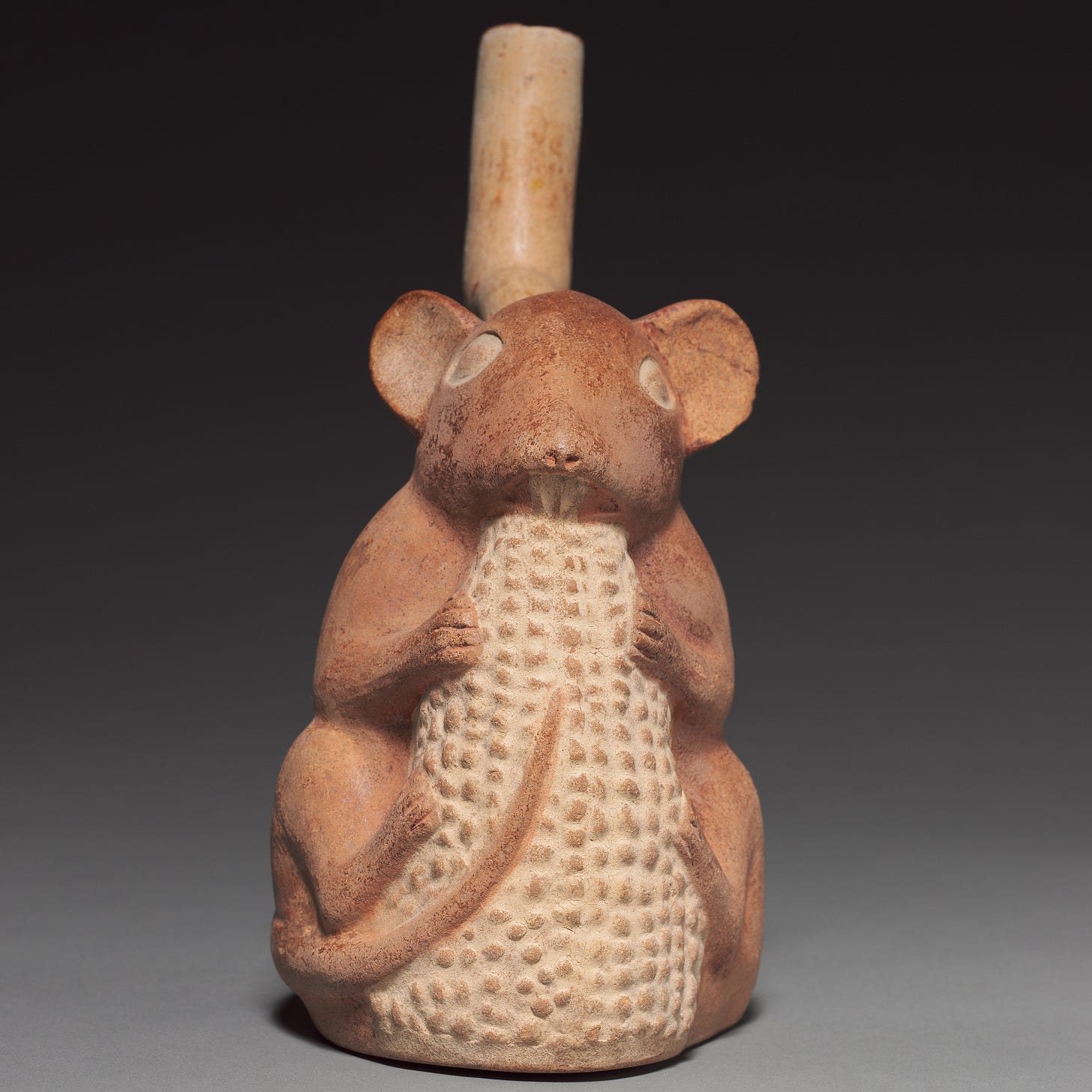
A few years back, my dear friend Junie gave me an incredibly thoughtful gift: a big jar of huitlacoche, a mushroom-like organism that often grows off corn. In Eater, Sylvio Martins writes: “this contagion is usually brought forth by annual rainy seasons and results in bulbous, blue-gray growths that deform maize kernels into Frankenstein-esque galls.”
Huitlacoche is still relished in Central American cultures — I had a huitlacoche quesadilla over the weekend! But for reasons — conquest, colonialism, capitalism, pick whichever c-word you want — it’s not a well-known food in the US.
I mention it here because another association we have with corn is neat rows: little rows of kernels, big rows of crops. Neat and tidy and efficient. Huitlacoche is a shocking (if you’re new to it) reminder that perhaps growing corn doesn’t have to be so neat and efficient. Corn is more than a feedstock. It’s a living thing. It’s a plant.
And like every other plant, it thrives not in neat little endless rows, but by living with other plants. In this case, corn famously thrives with squash and beans in the Three Sisters growing system.
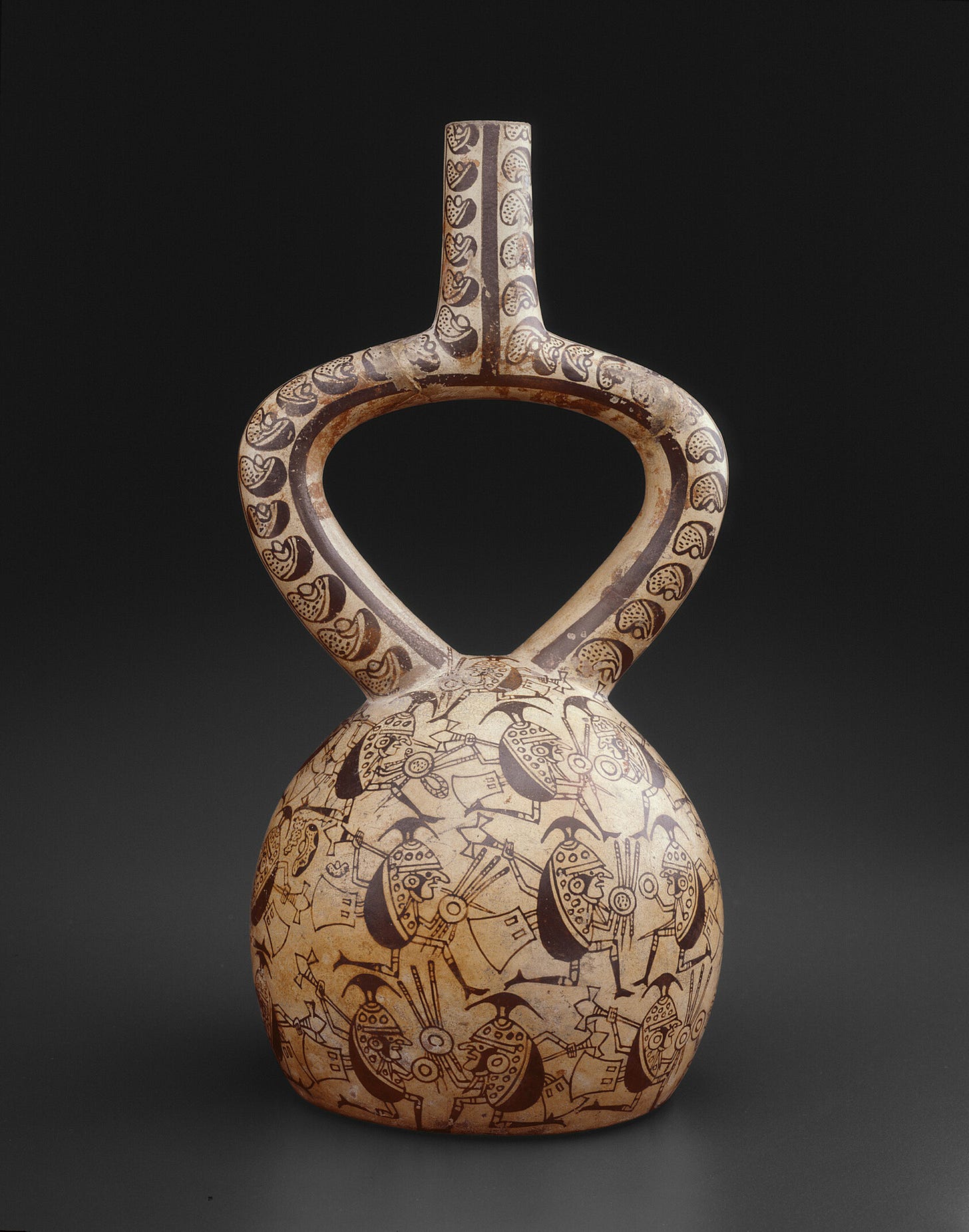
In Braiding Sweetgrass, Potawatomi writer and environmentalist Robin Wall Kimmerer writes about a time she received a packet of three seeds: a kernel of corn, a pumpkin seed and a bean:
“I hold in my hand the genius of indigenous agriculture, the Three Sisters. Together these plants— corn, beans, and squash—feed the people, feed the land, and feed our imaginations, telling us how we might live.”
She describes the lore (quoting from this excerpt):
“Three beautiful women came to their dwellings on a snowy night. One was a tall woman dressed all in yellow, with long flowing hair. The second wore green, and the third was robed in orange. The three came inside to shelter by the fire. Food was scarce but the visiting strangers were fed generously, sharing in the little that the people had left. In gratitude for their generosity, the three sisters revealed their true identities—corn, beans, and squash—and gave themselves to the people in a bundle of seeds so that they might never go hungry again.”
(Side note, this tale reminds me of the story of Annapurna).
The Three Sisters is a classic example of why we need agricultural diversity. These three crops support each other’s growth. The corn grows tall and provides structure for the beans, which wind upward and around the stalks. The beans capture enriching nitrogen from the atmosphere and channel it to the corn and squash. The squash lays low on the ground. Its wide, large leaves suppress weeds and retain moisture. The plants thrive together and produce more together than separately.
Below, I use the products of a Three Sisters system to create a parallel little meal system in a bowl - not tied to any specific ethnic cuisine.
Because what is the ideal of cooking if not to create something that is larger than the sum of its parts?
Recipe
Three Sisters bowl: polenta + miso-braised squash + black beans marinated in balsamic vineger and chili peppers
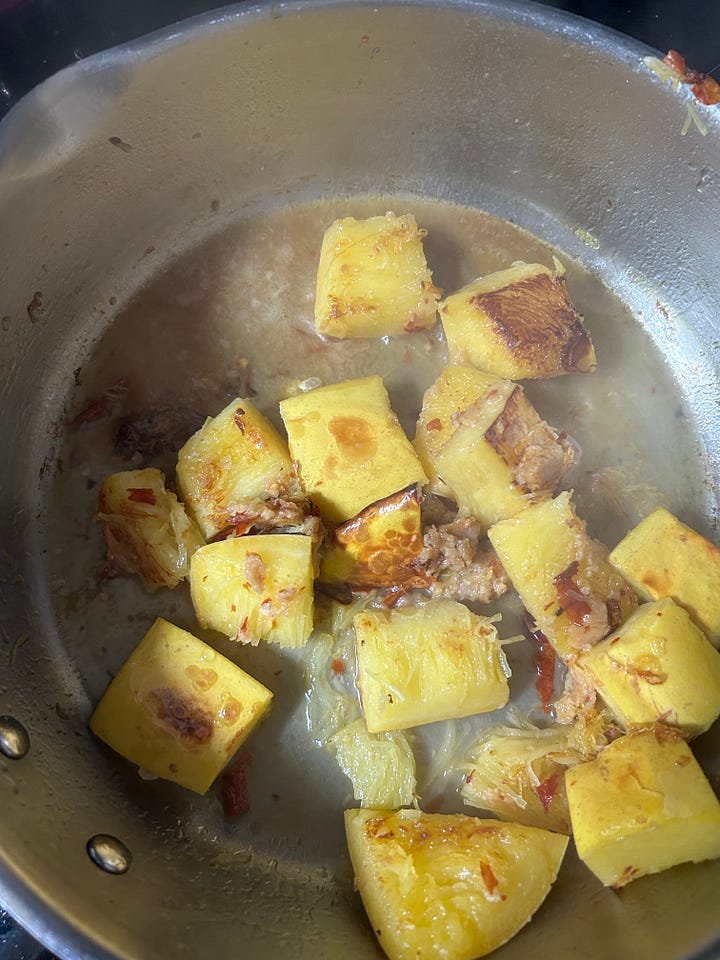
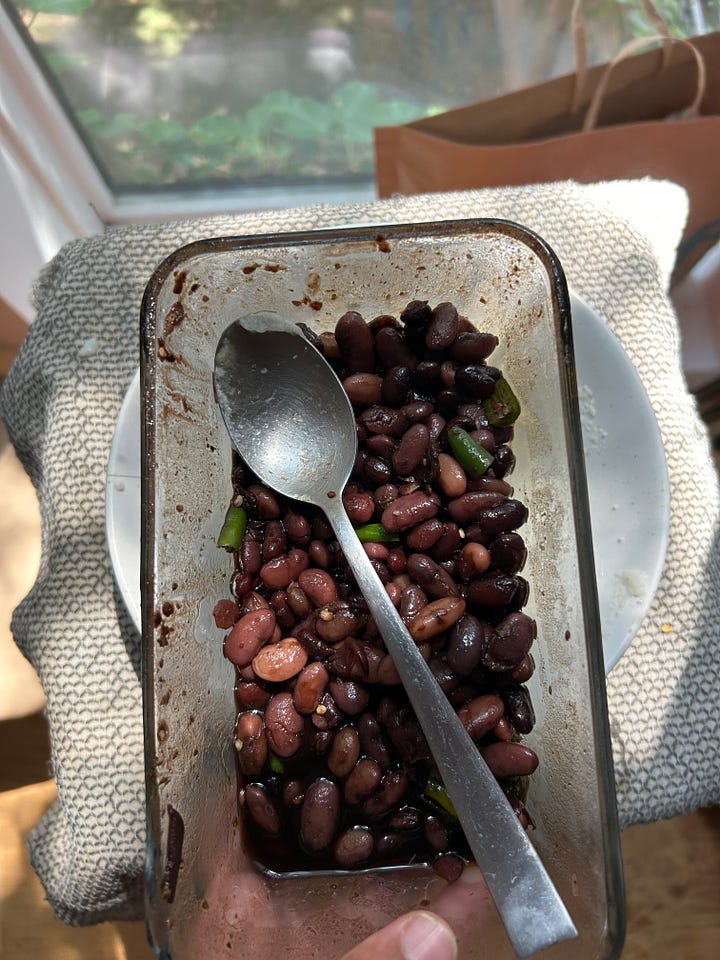
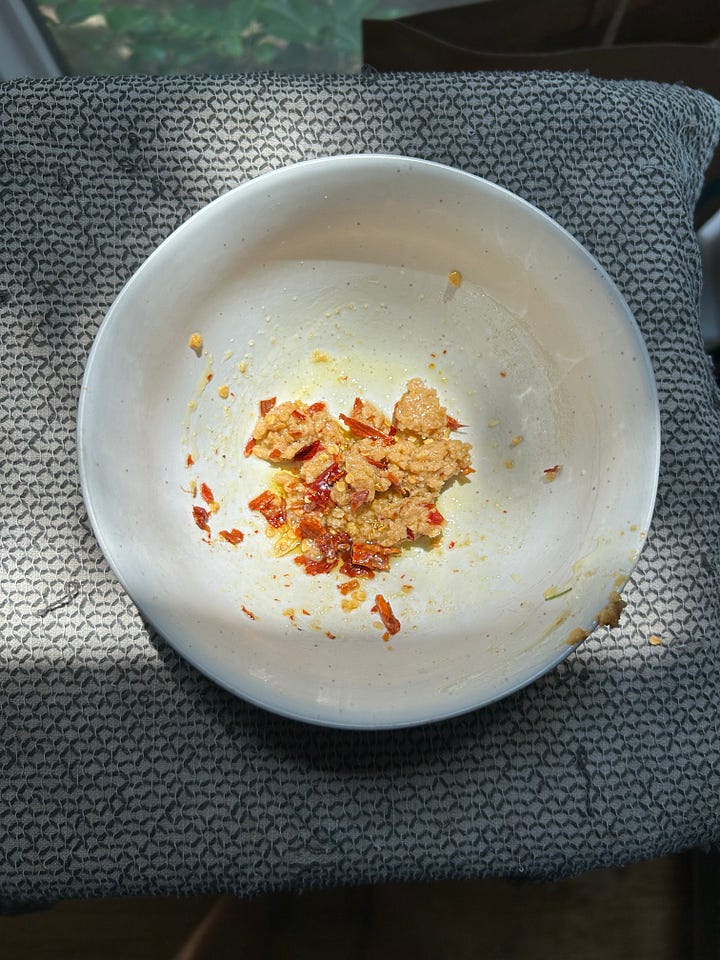
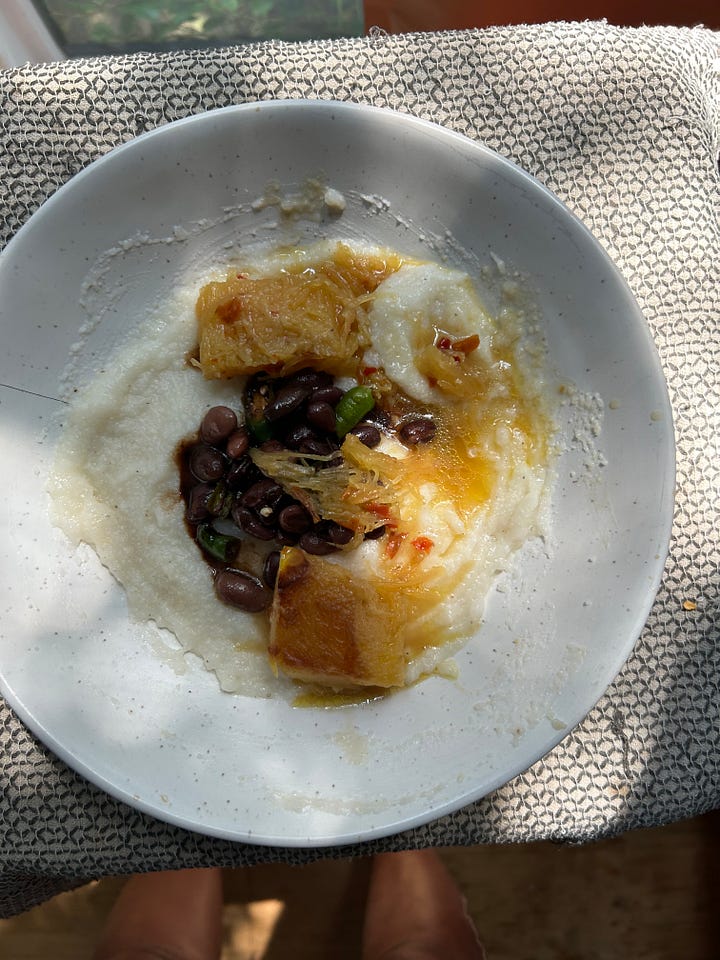
First, marinate black beans and a couple of Thai or bird’s eye peppers in salt and lots of balsamic vinegar for at least an hour. Diced onions about the size of the beans would be a good alternative to the peppers.
The braising liquid here is a simple miso sauce plus vegetable stock. The miso sauce: 1:1 miso paste to olive oil, and then a dash of salt and handful of crushed chili peppers (or none at all). Vegetable stock: I made a big pot of stock by boiling a bunch of goosefoot greens from my garden. Goosefoot greens are a highly nutritious “spontaneous urban plant” (i.e., weed). A tasty nutritious base for a meal!
Then make the polenta, which I made at home for the first time using these simple instructions from the Kitchn. I can’t believe I used to buy those polenta logs sometimes. Basically, you stir polenta vigorously into a pot of boiling water and then let it cook for about 30 minutes, stirring occasionally throughout. Ratio of about 1:4 cornmeal to water, and I added a little more here and there throughout the 30 minutes.
While the polenta’s cooking, get the squash going. Peel the squash and cut into large chunks (I softened the squash in the stock for a minute or two to make it easier to cut). Sear the squash in a wide pan with a pat or two of butter and a glug of olive oil, letting the chunks sizzle on the pan for a good while before flipping. Feel free to omit the butter. Then mix in the miso sauce with a rubber spatula and let simmer for 20 minutes. It creates an easy but flavorful stew, which polenta is a perfect receptacle for. Top with the marinated beans and enjoy!
Newsfeed
How Agroforestry Could Help Revitalize America’s Corn Belt, Yale Environment 360. For a lot more about what we can do to change the way we grow and enjoy corn.
How to Abandon an Archive, European Review of Books. In December last year, the macabre Assadd regime was toppled in Syria. The writers of this essay interviewed Syrians to explore the question, “What happens when an authoritarian regime collapses after half a century of surveillance and terror?” What happens to the records they meticulously keep, and what happens when people under a torture regime later examine those records?
One Architect’s Quest to Save Mumbai’s Heritage From Disappearing, Bloomberg. A fascinating peek into what seems like a fabulous career. The architect is a woman!
Li’l Nubs:
The last few days (and only the last few days), I started getting YouTube ads from Cuomo that show Zohran only in kurtas like below, never in a suit. The ads say he’ll be soft on crime with the usual fearmongering footage, then ends with Cuomo smiling at a little black girl.
Fuck Cuomo. I voted for Zohran, and I hope he wears his kurta to City Hall. I ranked Brad Lander #2 — I also think he’d make a great mayor.


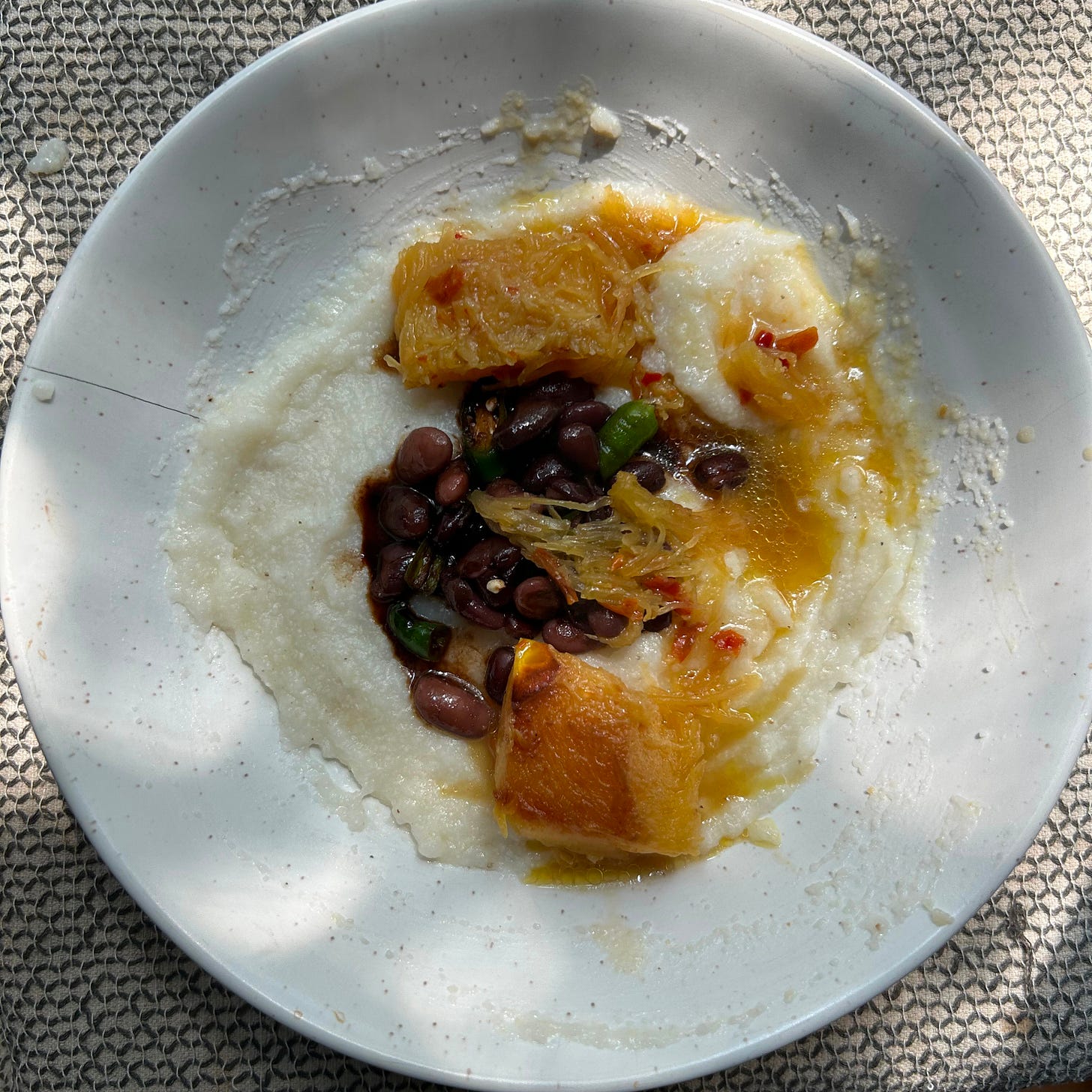


thank you for this!! i love corn hehe .. also the idea of a meal system in a bowl! i usually think in a (mostly non-scientific way) about how different plant ingredients cook together to create complete proteins (for human eating). but i hadn’t thought much about how they *grow* together ..